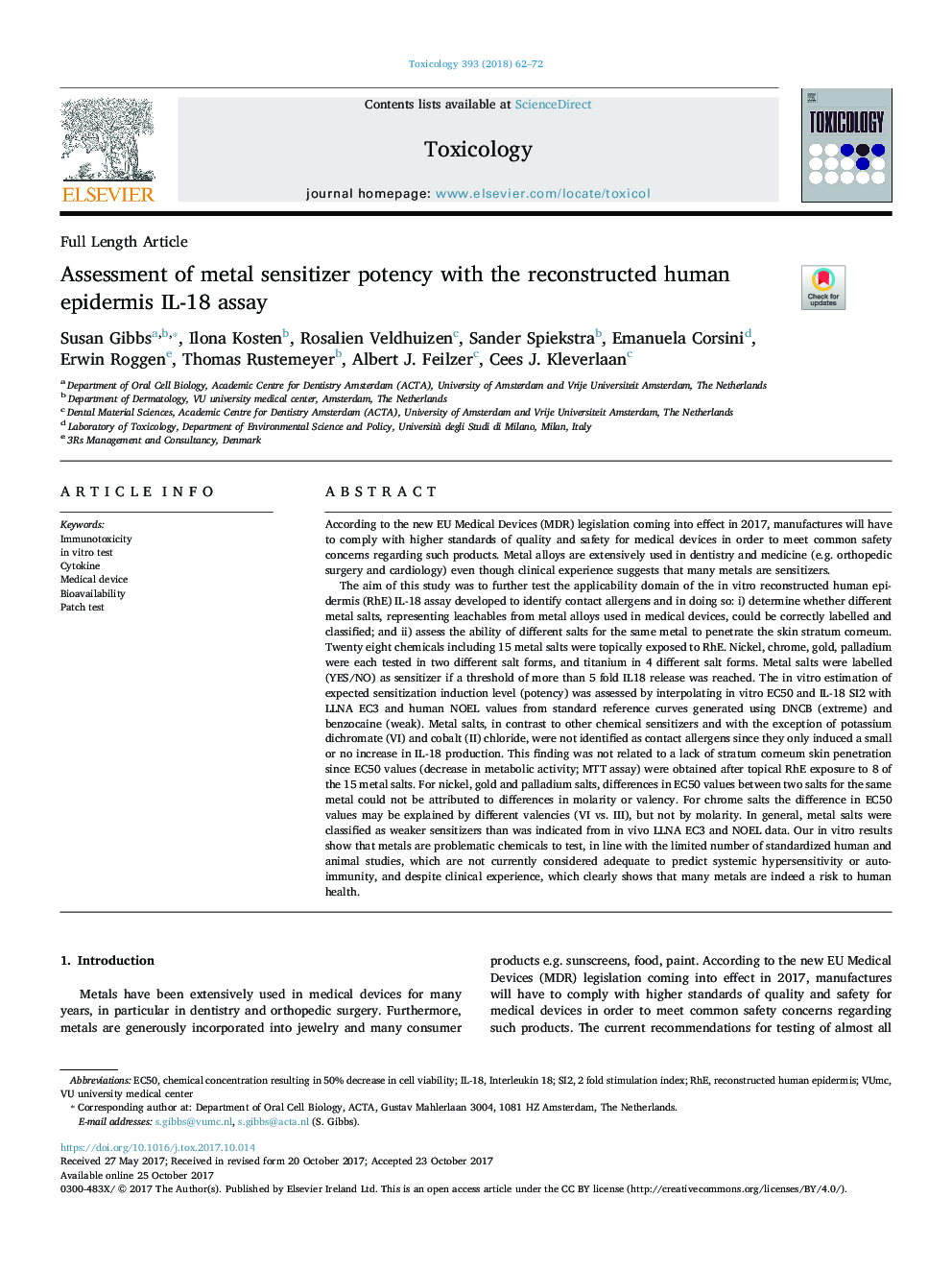| کد مقاله | کد نشریه | سال انتشار | مقاله انگلیسی | نسخه تمام متن |
|---|---|---|---|---|
| 8552907 | 1562279 | 2018 | 11 صفحه PDF | دانلود رایگان |
عنوان انگلیسی مقاله ISI
Assessment of metal sensitizer potency with the reconstructed human epidermis IL-18 assay
دانلود مقاله + سفارش ترجمه
دانلود مقاله ISI انگلیسی
رایگان برای ایرانیان
کلمات کلیدی
موضوعات مرتبط
علوم زیستی و بیوفناوری
علوم محیط زیست
بهداشت، سم شناسی و جهش زایی
پیش نمایش صفحه اول مقاله

چکیده انگلیسی
The aim of this study was to further test the applicability domain of the in vitro reconstructed human epidermis (RhE) IL-18 assay developed to identify contact allergens and in doing so: i) determine whether different metal salts, representing leachables from metal alloys used in medical devices, could be correctly labelled and classified; and ii) assess the ability of different salts for the same metal to penetrate the skin stratum corneum. Twenty eight chemicals including 15 metal salts were topically exposed to RhE. Nickel, chrome, gold, palladium were each tested in two different salt forms, and titanium in 4 different salt forms. Metal salts were labelled (YES/NO) as sensitizer if a threshold of more than 5 fold IL18 release was reached. The in vitro estimation of expected sensitization induction level (potency) was assessed by interpolating in vitro EC50 and IL-18 SI2 with LLNA EC3 and human NOEL values from standard reference curves generated using DNCB (extreme) and benzocaine (weak). Metal salts, in contrast to other chemical sensitizers and with the exception of potassium dichromate (VI) and cobalt (II) chloride, were not identified as contact allergens since they only induced a small or no increase in IL-18 production. This finding was not related to a lack of stratum corneum skin penetration since EC50 values (decrease in metabolic activity; MTT assay) were obtained after topical RhE exposure to 8 of the 15 metal salts. For nickel, gold and palladium salts, differences in EC50 values between two salts for the same metal could not be attributed to differences in molarity or valency. For chrome salts the difference in EC50 values may be explained by different valencies (VI vs. III), but not by molarity. In general, metal salts were classified as weaker sensitizers than was indicated from in vivo LLNA EC3 and NOEL data. Our in vitro results show that metals are problematic chemicals to test, in line with the limited number of standardized human and animal studies, which are not currently considered adequate to predict systemic hypersensitivity or autoimmunity, and despite clinical experience, which clearly shows that many metals are indeed a risk to human health.
ناشر
Database: Elsevier - ScienceDirect (ساینس دایرکت)
Journal: Toxicology - Volume 393, 15 January 2018, Pages 62-72
Journal: Toxicology - Volume 393, 15 January 2018, Pages 62-72
نویسندگان
Susan Gibbs, Ilona Kosten, Rosalien Veldhuizen, Sander Spiekstra, Emanuela Corsini, Erwin Roggen, Thomas Rustemeyer, Albert J. Feilzer, Cees J. Kleverlaan,